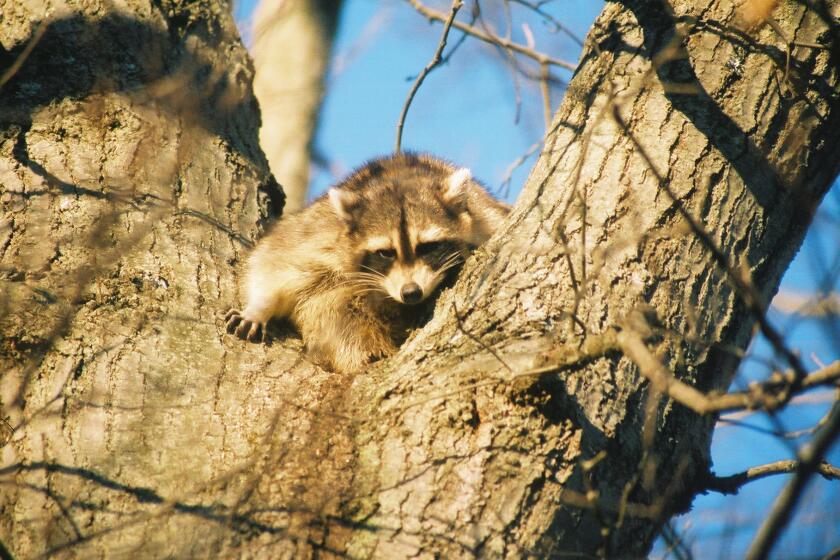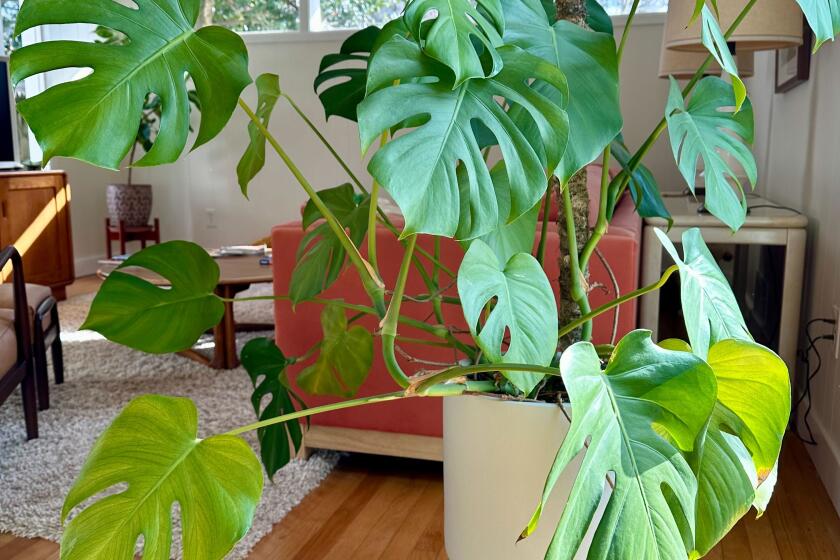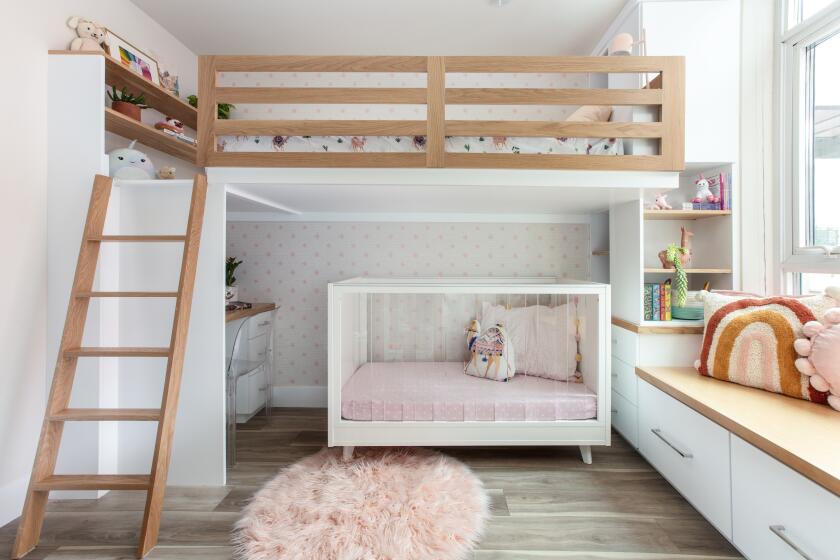Creating a dog-proof garden
Sue Subkow loves her dogs and her backyard, but the two haven’t always been compatible.
She used to look out at the grass and see dead patches where the dogs had done their own watering and dirt piles where they’d been digging.
It was Dogs 100, San Diego Backyard 0. The canines were winning every battle.
“We would put in new sod and two months later it would look just horrible,” she recalls.
Denise Rolen, too, used to watch her dogs kill the lawn and destroy plants. When she got a new puppy about eight years ago and noticed she had a taste for vegetation, Rolen did some research and discovered her English ivy was toxic to dogs.
“So we had to take all that out and redo the hillside,” she says.
And what about all those beautiful flowers that gardeners lovingly put in around the yard each spring?
Judy Macomber of Vista used to plant them and then watch her “big, lovable doofus dogs” flatten every one.
Today, all three women have adapted and achieved dog détente. They have the backyards they want and the pups they adore.
Subkow and her husband, who have four golden retrievers, decided to take out the grass and put in artificial turf. Rolen and her husband, who have two goldens, have redesigned two backyards, including the one at their new place in Escondido, to create separate dog-play areas with raised planter beds and tougher, dog-friendly plants. And Macomber — a master gardener who’s an expert on creating dog-proof yards — often puts her flowers and plants in big pots (rather than in the ground) to protect them from her rampaging hounds (and hungry gophers).
To Macomber, dogs and a nice backyard don’t have to be mutually exclusive.
“You can do it,” she says. “You have to be patient and, most of all, pay attention to what they’re doing, because their little brains are working out there and they consider it their yard, too. You can outwit them.”
Some of their tips (along with suggestions from others):
No more brown spots
Subkow and Rolen both put in artificial turf with drainage systems. The grass stays green, it can be washed down with a sprinkler system or a hose and there’s no mud and grass tracked into the house when it rains. “People see pictures of my grass and they say, ‘Oh, my gosh, that’s beautiful,’ and we’ve had it for eight years now,” says Subkow. Another idea: go without a lawn — or have a much smaller one — and use open areas with hard-packed dirt (such as stabilized decomposed granite) or hardscape (concrete, gravel or stone, etc.) and tough, low-water vegetation.
Pot those plants
Use big pots for delicate plants, flowers and vegetables. They come in a variety of shapes, sizes and colors (barrels, tubs and wooden boxes also can be used), and they can be arranged all over your yard, singly and in bunches. Dogs are less likely to dig them up, jump on them or nibble off the buds.
Hanging gardens
Planter boxes and pots can be put up high or hung from eaves, fences and trees. They’ll be out of the dogs’ reach and provide color and vegetation at a variety of eye levels in the yard. Plants such as Cape jasmine (gardenia) are perfect for those boxes and can climb and cover back fences.
Raised beds
Put in raised planter beds of a height to discourage whatever dog you have. If it’s a Chihuahua, just a few inches will do. A Lab or German shepherd will require something higher.
Walkways
Create paths for dogs to roam through the yard, with hardscape such as flagstones, small gravel, bricks, concrete, wood chips or landscaping bark. By creating easy traffic lanes, most dogs will be less likely to barrel over and through vegetation.
Protective borders
Use more hardscape such as coarse gravel and bigger rocks around plants and trees you don’t want the dogs to bother. Many dogs don’t like to walk on rougher surfaces.
Make a digging area
If you have a dog that won’t stop digging, create a soft, sandy area it can use almost as a sandbox. Macomber did that for her Jack Russell terrier, then buried treats and toys in it. Soon, that was where it would dig, looking for buried treasure.
Fence it off
Some homeowners choose to fence off certain areas of the yard to put in a garden or to create a dog-free zone when guests are over. This prevents the dogs from getting in trouble and gives those tomatoes a fighting chance. The Rolens created separate yards, divided by a fence. The dogs can play on their side while the humans relax on the other side.
Pick the right plants
If you’re determined to have ground cover and plants in the ground, make certain they’re tough, with deeper roots — and also not harmful to dogs. Macomber notes that red apple ground cover, coreopsis and four o’clocks, for instance, are hardy, colorful and bounce right back from trampling. Stay away from thorny bushes and cactus, but they can be OK if they’re in a non-trafficked area. Even out of the way, though, the spines could still hurt big, active dogs. Many websites provide good information about dangerous and toxic plants; two good examples are davesgarden.com and the UC Davis veterinary site, vetmed.ucdavis.edu.
Protect the borders
Dogs protect their turf and will patrol the borders of their yard, so keep that in mind when designing the yard. If they hear a noise, they’ll charge toward the fence, so don’t plant thorny bushes there, or plants that can be easily damaged. Leave a path around the perimeter where they can patrol.
Be sneaky
Macomber suggests you never let dogs watch you put in plants. “Because your dog bonds with you and he thinks you’re a dog, too, believe it or not, he thinks if you’re burying (planting) something, it’s tasty,” she says. So, many will go back to the spot where you’ve planted and dig it up.
The bottom line
Creating a dog-proof backyard is a win-win, says Subkow, who says she’ll always have dogs. So why fight them? Learn to live with them by creating a yard where the plants are protected and you won’t always have to be vigilant, shooing your friends from eating your favorite flowers or napping on your delicate ground cover.
“They’re happy, not getting scolded,” she says. “Some of it is just making the area dog-friendly, like when you have a child in your house you have to make it baby proof. You have to dog-proof your backyard.”
Get U-T Arts & Culture on Thursdays
A San Diego insider’s look at what talented artists are bringing to the stage, screen, galleries and more.
You may occasionally receive promotional content from the San Diego Union-Tribune.










